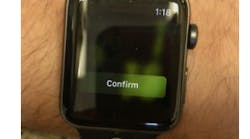The benefits of intra-office communication software in your dental practice
Dental staff members must communicate during the clinical day. How can they do that effectively and discreetly? Intra-office software might be the answer. Here are some of its advantages.
Dental practices have traditionally used one of two methods to communicate time-sensitive messages among staff members—delivering messages in person, or using a blinking light system. Though both approaches get the job done, they have their drawbacks. In-person messages require a significant time investment from your staff, and they lack discretion. Blinking light systems can be more discreet, but often require a high upfront cost. It can be distracting for patients and staff to see a blinking light whenever three’s a message.
Intra-office communication software was developed to help improve upon the traditional communication methods. Examples of software that provide these capabilities include OperaDDS and YAPI.
Many mistakenly believe that this type of software is useful only in large practices with mulitple staff members and operatories. However, intra-office communication can benefit practices of all sizes. I’ll explore the most important (and often overlooked) reasons why your dental practice should invest in intra-office communication software.
Improve your patients’ experiences
From the patient perspective, it looks unprofessional for staff to shout up and down the hall to communicate about other patients. By sharing messages discreetly through software, patients are unaware that anything is happening behind the scenes, which offers a more personalized experience for each patient. As Bobbi Stanley, DDS, owner of Stanley Dentistry who switched from a wall system with flashing lights to YAPI, said, “Even though our office sees many patients at once, we want each patient to feel like they're the only one in the office. We don't want them to feel like the doctor's mind is somewhere else when during treatment. Intra-office communication software has helped us accomplish this.”
Increase staff productivity
Intra-office communication is a particularly nice benefit for front desk staff because they’ll be able to stay in their area instead of having to chase down hygienists or dentists throughout the office. This is important not only for greeting incoming patients, but also for helping patients check out and pre-appoint. Since the front desk is no longer spending time chasing down people, they can spend their time on scheduling and other administrative tasks.
Improve case acceptance rate
Using software to streamline intra-office communication is an often-overlooked way to improve case acceptance rates, since it helps everyone get on the same page.
For example, the front desk staff can use the software to share noteworthy observations about patients (e.g., “Did she seem nervous, and if so, did she mention what was troubling her?”). The hygienist can build on those findings by asking the patient some open-ended, exploratory questions for more details, and address any questions and concerns that come up.
The hygienist can also relay useful findings to other staff members via intra-office communication. While the hygienist continues to interact with the patient, the dentist or front desk staff can work on answers to any questions that require research, such as the cost of a crown under the patient's insurance plan.
OperaDDS has seen customers directly benefit from the software to prepare answers to treatment-related questions, which has increased their rate of same-day dentistry. “Everything is coordinated ahead of time, so when I ask patients if they’d like to get the treatment done today, they’re blown away that they don’t have to reschedule or wait at the front to discuss financials," said Martin Helmbrecht, Support Lead at OperaDDS who also works as a hygienist.
By addressing patients’ most pressing concerns, practices will maximize their chances that patients follow through with proposed treatment, whether it’s performed that day or later.
Improve clinical calibration
Clinical calibration is important to make sure that the correct diagnoses are made for every patient. Calibration not only ensures that patients get the best treatment possible, it also helps t patients better understand why certain treatments are important, and can thereby improve case acceptance rate.
Intra-office communication software can be a powerful way to improve calibration between hygienists and doctors. For example, during a hygiene appointment, the hygienist can take note of anything that looks like it may warrant investigation by the doctor. If the patient's gums appear to be bleeding more than usual, this may indicate periodontal disease. The hygienist can mention this to the patient, and also discreetly convey the information to the dentist via the intra-office communication tool.
If the dentist confirms the hygienist's hypothesis during the patient exam, this creates a united front and helps the patient understand the importance of proposed treatment. If, on the other hand, the hygienist is not sure if something should be diagnosed or not, he or she can discreetly share this message via intra-office software with the doctor and discuss and improve clinical calibration for future patients.







